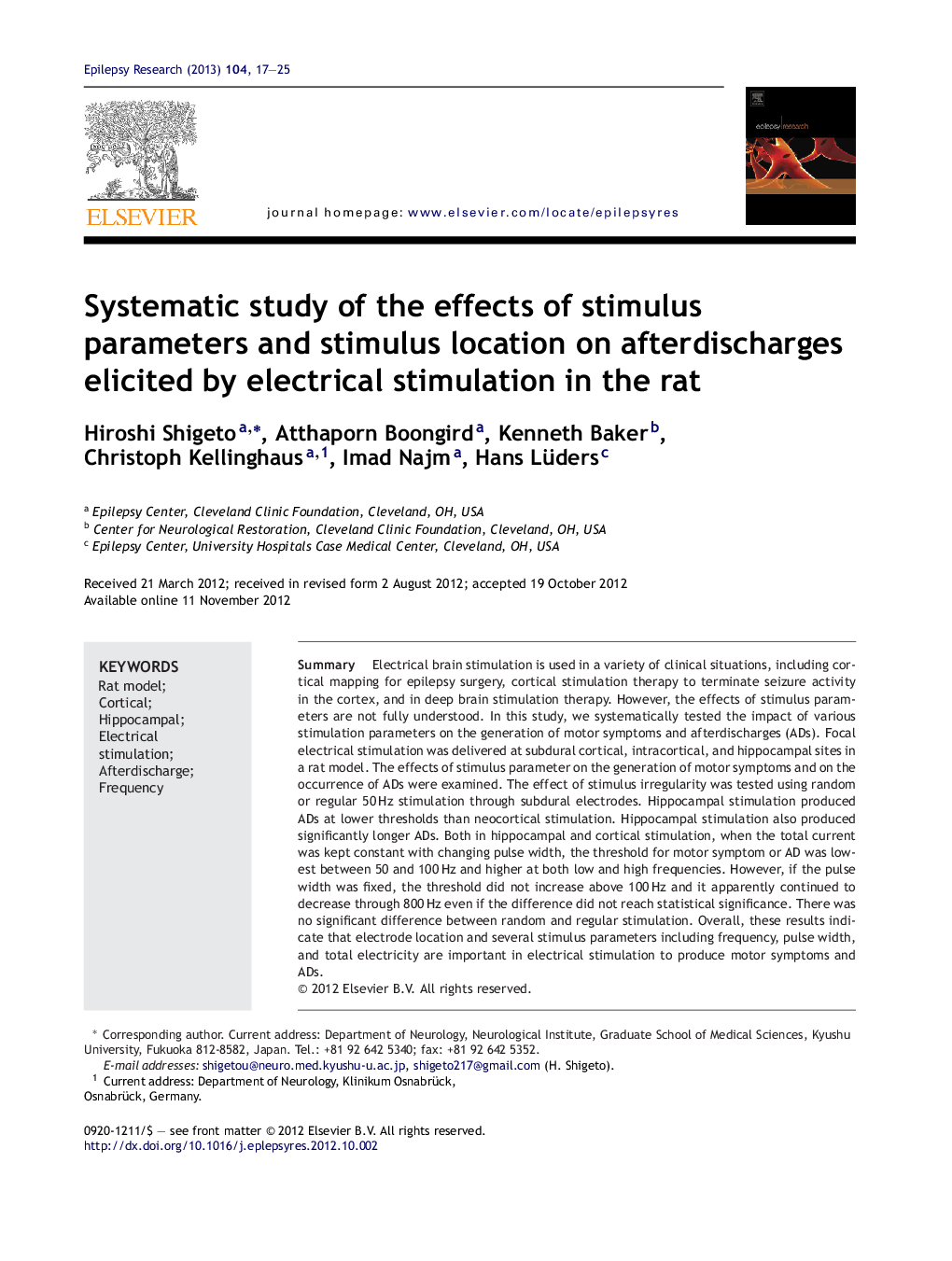| Article ID | Journal | Published Year | Pages | File Type |
|---|---|---|---|---|
| 3052074 | Epilepsy Research | 2013 | 9 Pages |
SummaryElectrical brain stimulation is used in a variety of clinical situations, including cortical mapping for epilepsy surgery, cortical stimulation therapy to terminate seizure activity in the cortex, and in deep brain stimulation therapy. However, the effects of stimulus parameters are not fully understood. In this study, we systematically tested the impact of various stimulation parameters on the generation of motor symptoms and afterdischarges (ADs). Focal electrical stimulation was delivered at subdural cortical, intracortical, and hippocampal sites in a rat model. The effects of stimulus parameter on the generation of motor symptoms and on the occurrence of ADs were examined. The effect of stimulus irregularity was tested using random or regular 50 Hz stimulation through subdural electrodes. Hippocampal stimulation produced ADs at lower thresholds than neocortical stimulation. Hippocampal stimulation also produced significantly longer ADs. Both in hippocampal and cortical stimulation, when the total current was kept constant with changing pulse width, the threshold for motor symptom or AD was lowest between 50 and 100 Hz and higher at both low and high frequencies. However, if the pulse width was fixed, the threshold did not increase above 100 Hz and it apparently continued to decrease through 800 Hz even if the difference did not reach statistical significance. There was no significant difference between random and regular stimulation. Overall, these results indicate that electrode location and several stimulus parameters including frequency, pulse width, and total electricity are important in electrical stimulation to produce motor symptoms and ADs.
